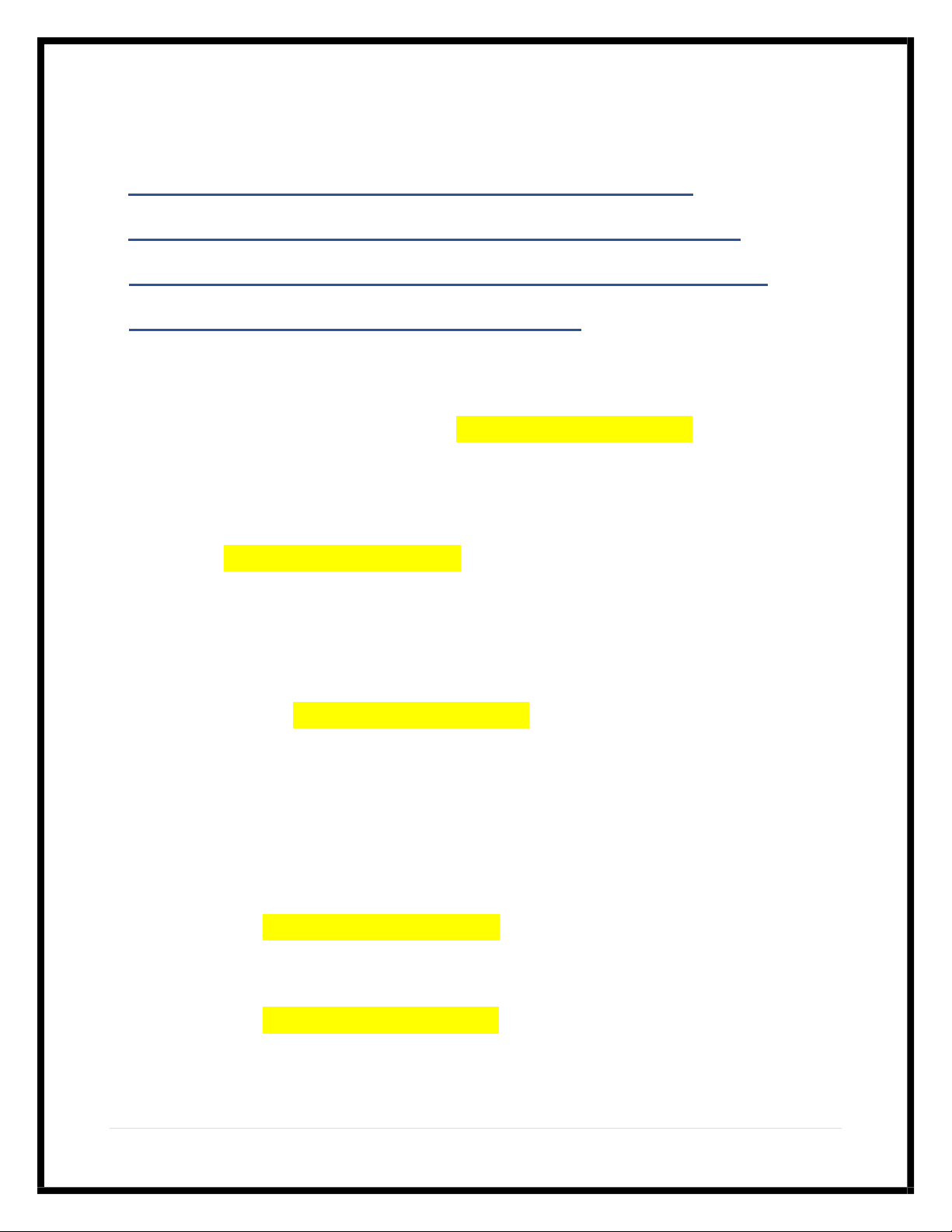
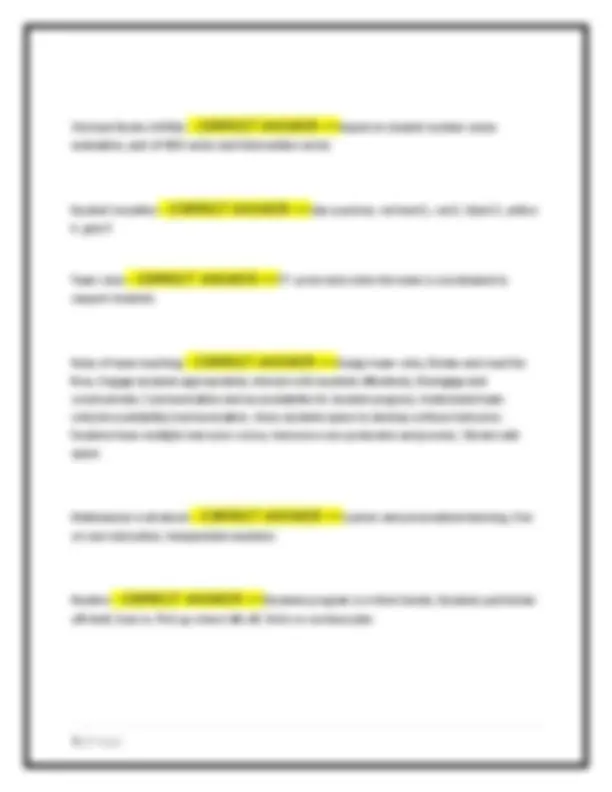
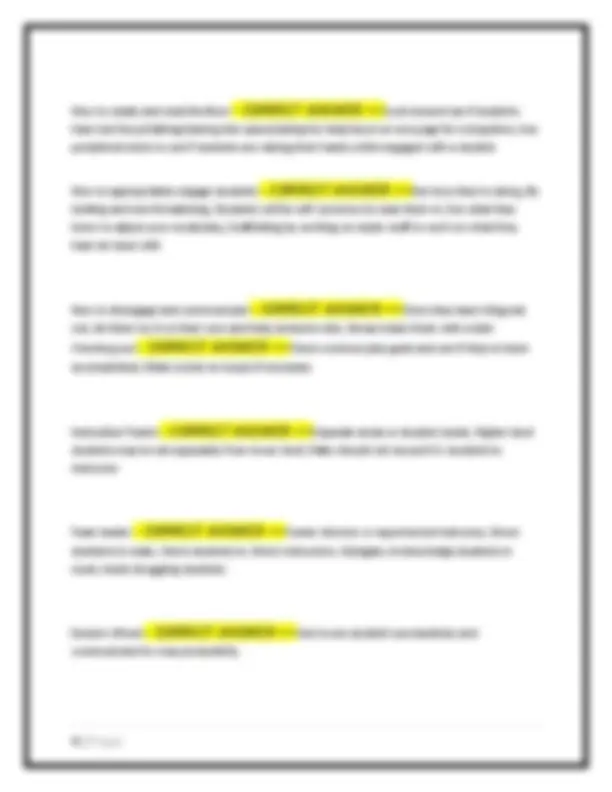
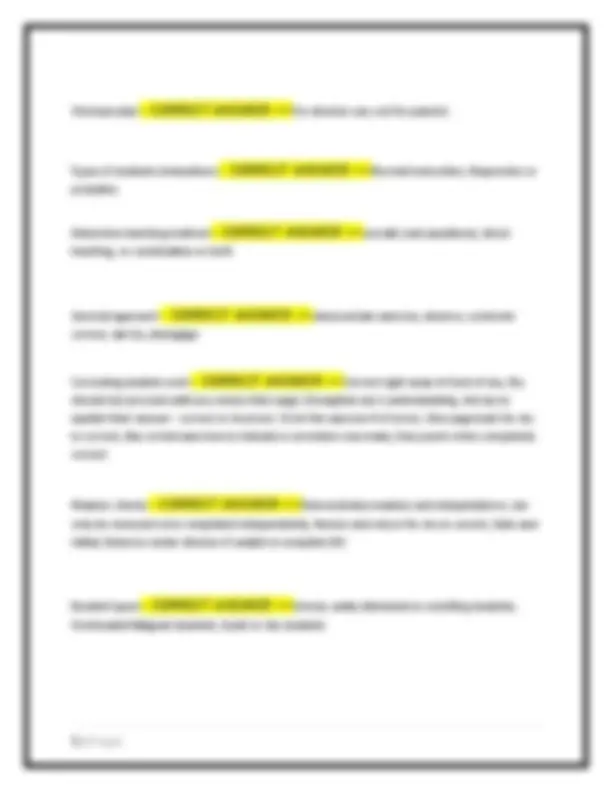
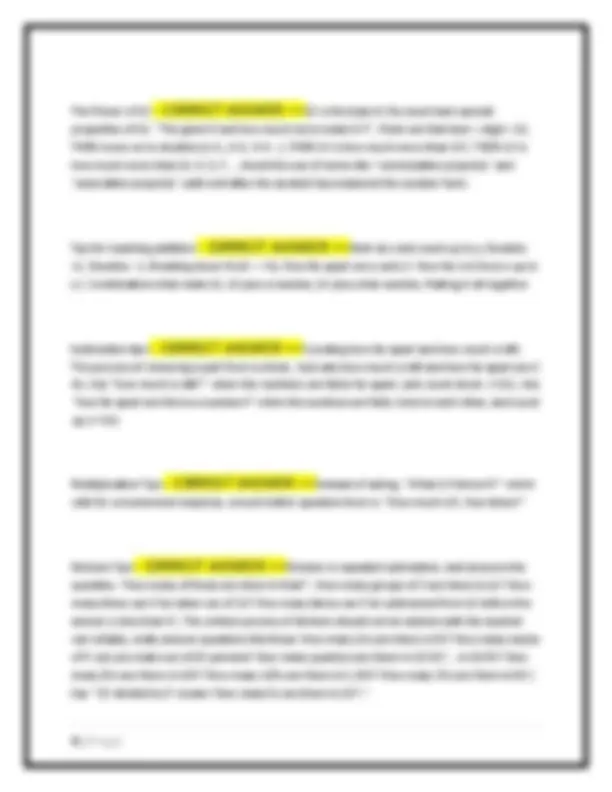
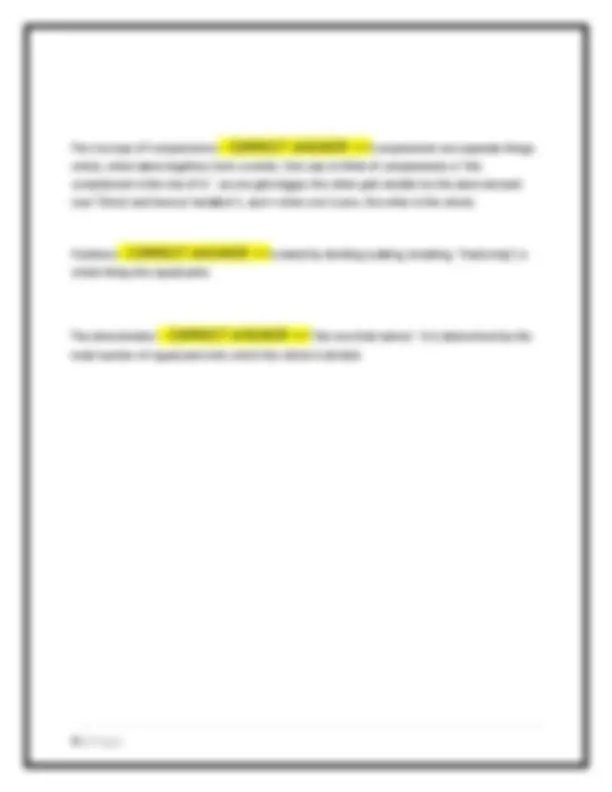
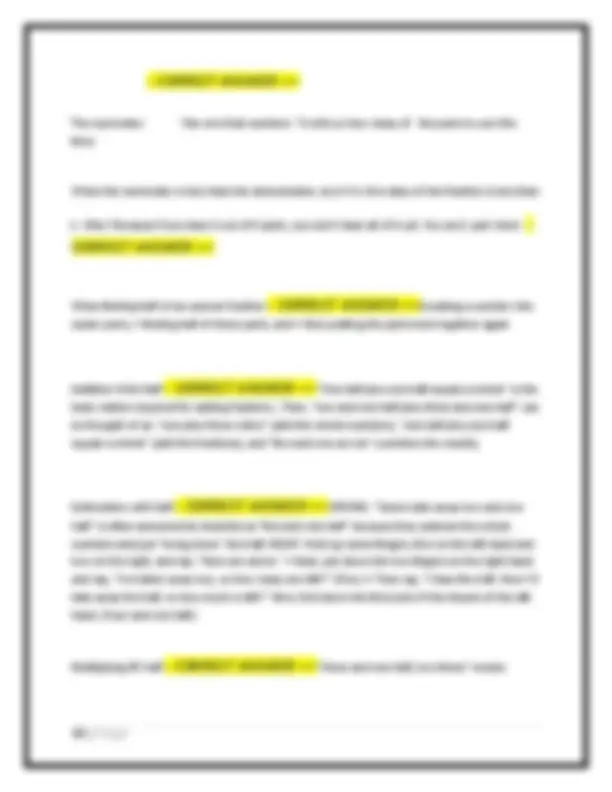
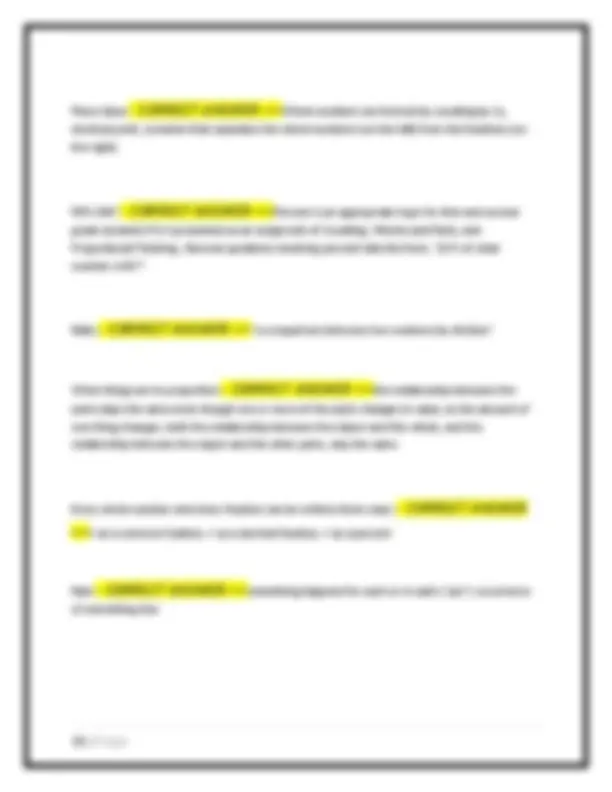
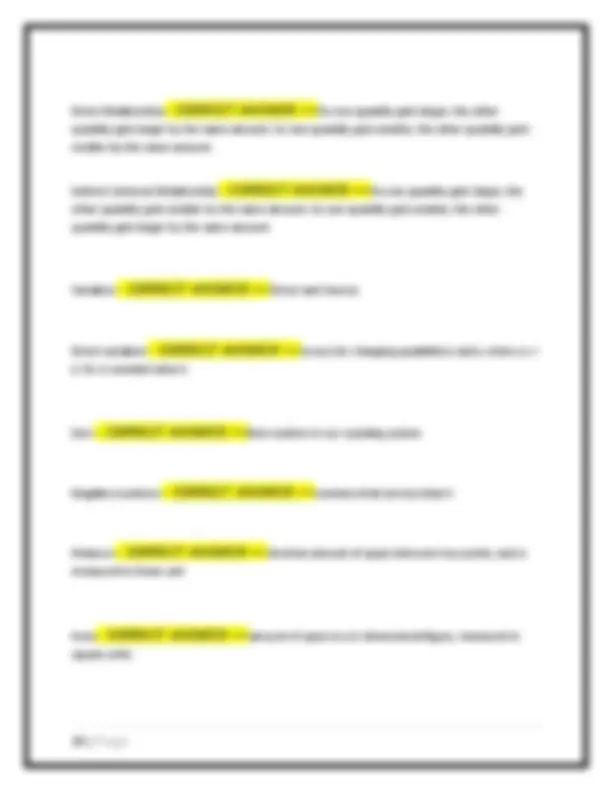
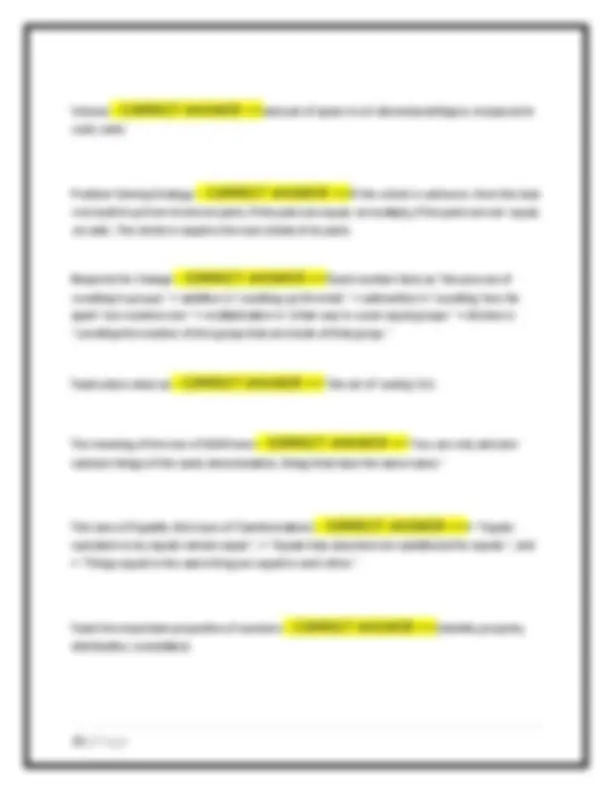
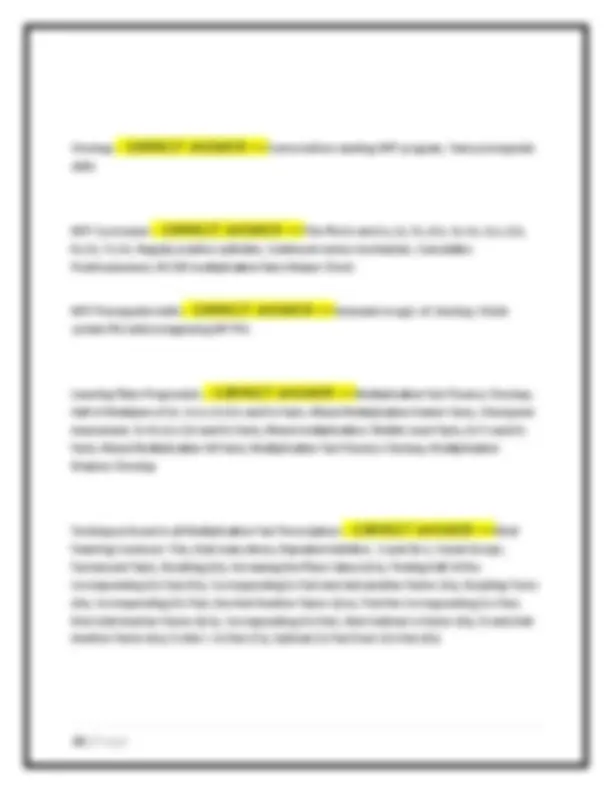



Study with the several resources on Docsity

Earn points by helping other students or get them with a premium plan


Prepare for your exams
Study with the several resources on Docsity

Earn points to download
Earn points by helping other students or get them with a premium plan
Community
Ask the community for help and clear up your study doubts
Discover the best universities in your country according to Docsity users
Free resources
Download our free guides on studying techniques, anxiety management strategies, and thesis advice from Docsity tutors
MATHNASIUM TRAINING EXAM RETAKE ASSESSMENT NEWEST VERSION 2025 WITH COMPLETE QUESTIONS AND SOLUTION 100% VERIFIED ANSWERS A+ GRADED Individual instruction in a group environment - CORRECT ANSWER >>>many classes of one Team teaching - CORRECT ANSWER >>>instructors rotate on the floor, helping students in strategic moments, students benefit from multiple instructors, Each instructor helps students individually
Typology: Exams
1 / 19

This page cannot be seen from the preview
Don't miss anything!












one
strategic moments, students benefit from multiple instructors, Each instructor helps students individually
try a new explanation if it isn't working, fall back on old knowledge when a student is struggling and expand knowledge with student is succeeding, praise and criticize constructively when appropriate, socratic vs direct teaching, use mathnasium vocabulary, use tools for visual learning, use metacognition, use mental math, master team teaching
activities, HW
Supporting and encouraging voice, Be concise
independent, help someone else, then come back
plan, assembled from assessment results
Prescriptives in works (grade specific), A+ splits active packs and new packs, Workout books in works (development dependent, simple and helps with mathematical thinking), Corrected prescriptives, Corrected workout books
increasing difficulty ranging in length (2-22 pgs) (Don't tell them the PK level)
adds depth, advanced students, code at bottom right of each page
have lost focus/talking/staring into space/asking for help/stuck on one page for a long time, Use peripheral vision to see if students are raising their hands while engaged with a student
inviting and non threatening, Students will be self conscious to ease them in, See what they know to adjust your vocabulary, Scaffolding by working on easier stuff to work on what they have an issue with
out, let them try it on their own and help someone else, Always leave them with a task
accomplished, Make a note on issues if necessary
students may be sat separately from lower level, Ratio should not exceed 4:1 students to instructor
students to seats, Check students in, Direct instructors, Delegate, Acknowledge students in need, Assist struggling students
communicate for max productivity
proactive
teaching, or combination or both
correct, ask Qs; disengage
should not proceed until you review their page, Strengthen stu's understanding, Ask stu to explain their answer - correct or incorrect, Circle the exercise # of errors, Give page back for stu to correct, Box circled exercises to indicate a correction was made, Star punch when completely correct
only be reviewed once completed independently, Review and return for stu to correct, Date and initial, Notes to center director if unable to complete MC
Overloaded fatigued students, Quiet or shy students
(measure)
various aspects of math.
portion (amount)
things that are of the same denomination.
some double digit number answers, These are things students must know in order to learn more advanced math
bigger/smaller than five? 2 bigger/smaller than 9?", THEN they should be asked "name 2 #s that add up to 5" or "what and 3 add up to five?", THEN "5 and how much more make 7?" and "8 is how much more than 5?"
properties of 10, "The given # and how much more make 10?", Point out that teen = digit + 10, THEN move on to doubles (1+1, 2+2, 3+3...), THEN 1X is how much more than 10?, THEN 1X is how much more than 10, 9, 8, 7..., Avoid the use of terms like "commutative property" and "associative property" until well after the student has mastered the number facts.
+1, Doubles - 1, Breaking down #s (6 + = 8), How far apart are x and y?, How far is it from x up to y?, Combinations that make 10, 10 plus a number, 10 plus what number, Putting it all together
The process of removing a part from a whole., Sub asks how much is left and how far apart are 2 #s, Use "how much is left?" when the numbers are fairly far apart, and count down. (~10), Use "how far apart are the two numbers?" when the numbers are fairly close to each other, and count up (<<10)
calls for a memorized response, a much better question form is: "How much is 5, four times?"
question, "How many of these are there in that?", How many groups of 3 are there in 12? How many times can 3 be taken out of 12? How many times can 3 be subtracted from 12 before the answer is less than 3?, The written process of division should not be started until the student can reliably, orally answer questions like these: How many 10s are there in 30? How many stacks of 5 can you make out of 20 pennies? How many quarters are there in $3.00? ...in $4.50? How many 20s are there in 100? How many 125s are there in 1,000? How many 15s are there in 60?, Say "'15 divided by 5' means 'How many 5s are there in 15?'."
- CORRECT ANSWER >>> The numerator "the one that numbers." It tells us how many of the parts to use this time When the numerator is less than the denominator, as in 3 4, the value of the fraction is less than
easier parts, • finding half of those parts, and • then putting the parts back together again
basic notion required for adding fractions., Then, "two and one half plus three and one half" can be thought of as: "two plus three is five" (add the whole numbers), "one half plus one half equals a whole" (add the fractions), and "five and one are six" (combine the results).
half" is often answered by students as "five and one half" because they subtract the whole numbers and just "bring down" the half, RIGHT: Hold up seven fingers, five on the left hand and two on the right, and say, "Here are seven." • Next, put down the two fingers on the right hand and say, "I've taken away two, so how many are left?" (Five.) • Then say, "I have five left. Now I'll take away the half, so how much is left?" Now, fold down the first joint of the thumb of the left hand. (Four and one half.)
- CORRECT ANSWER >>> "three, two times, and one half, two times." Saying "3½, two times" does this; saying "2 times 3 ½" doesn't. Dividing by half "Three divided by one half" can be thought of as "How many halves are there in three wholes?" or "How many half sandwiches can you make out of three whole sandwiches?"
or decimal fraction.
Proper fraction A fraction whose absolute value is greater than or equal to zero (0) and is less than one whole
than one whole (1).
decimal point, a marker that separates the whole numbers (on the left) from the fractions (on the right)
grade students if it is presented as an outgrowth of Counting, Wholes and Parts, and Proportional Thinking., Reverse questions involving percent take the form, "10% of what number is 40?"
parts stays the same even though one or more of the parts changes in value; as the amount of one thing changes, both the relationship between the object and the whole, and the relationship between the object and the other parts, stay the same
of something else
quantity gets larger by the same amount. As one quantity gets smaller, the other quantity gets smaller by the same amount.
other quantity gets smaller by the same amount. As one quantity gets smaller, the other quantity gets larger by the same amount.
k, for a constant value k
measured in linear unit
square units
sum of its parts." • "Any one part is equal to the whole minus all of the other parts."
another, using given rules."
10 plus a single digit # (emphasizes that the 1 in the 10s place means 10, includes 10 and X more is 1X), decomposing single digit numbers (Do these numbers feel close together or far apart? The count FORWARD or BACK)
students
number without finger counting), Complements of 10 (uses language from tier 1, puzzle piece helps visualize complements of 10), Doubles facts, subtraction facts Minuends up to 10 (builds upon up to and take away ideas to introduce subtraction, and find how much is left)
and add/take away 10 and what method works for you), Subtraction Facts/MIssing Addends, Minuends Over 10 (scaffolding for up to and over 10 technique)
they have no way of getting around it because they lack understanding and strategies, Without strategies, stu uses inefficient techniques or wild guess
equals a product
product
product
knowledge, efficient techniques, structured practice, engaging activities
with the highest product wins that round
card on their opponent's forehead, but not the card on their own forehead, after the moderator tells the product, players race to state the value on their heads
product of your number and their number OR roll 2 dice and stu finds their product
of cards that are factors of each product
a grid of dominoes